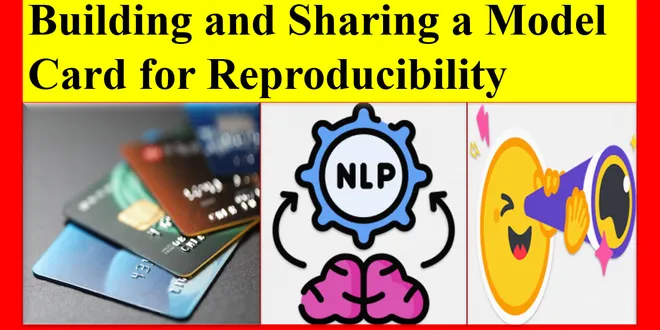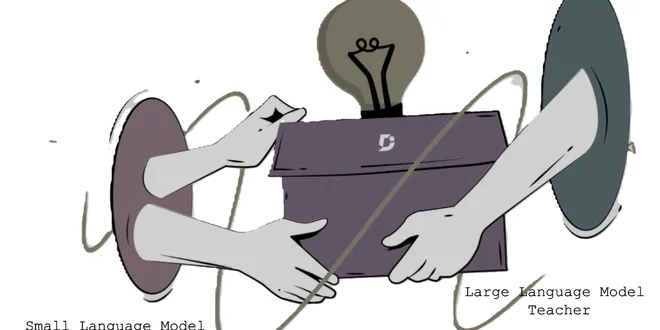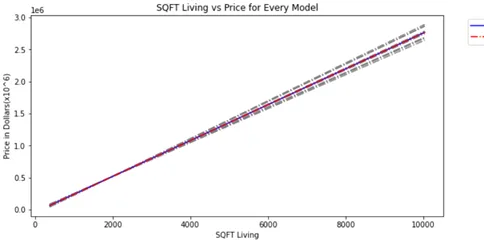Model-Packaging
Model packaging refers to the process of organizing and preparing machine learning models for deployment and use in real-world applications. This involves creating a structured format that includes not only the model itself but also essential metadata, such as versioning, dependencies, and performance metrics. Effective model packaging enhances reproducibility, facilitates collaboration among data scientists, and ensures that models can be easily integrated into various systems. By standardizing how models are packaged, organizations can streamline their workflows, improve model management, and ultimately deliver more reliable AI solutions to end-users.

Model Cards
Introduction A **model card** is a short document that provides key information about a machine learning model. Model cards increase transparency by communicating information about trained models to ...
📚 Read more at Kaggle Learn Courses🔎 Find similar documents

Model Cards
Introduction A **model card** is a short document that provides key information about a machine learning model. Model cards increase transparency by communicating information about trained models to ...
📚 Read more at Kaggle Learn Courses🔎 Find similar documents

Model Cards
Introduction A **model card** is a short document that provides key information about a machine learning model. Model cards increase transparency by communicating information about trained models to ...
📚 Read more at Kaggle Learn Courses🔎 Find similar documents

Building and Sharing a Model Card for Reproducibility
Model Card In machine learning, a model card is like a box of Lego pieces and instructions. It’s a document that explains how a machine-learning model was built, trained, and tested. This way, someone...
📚 Read more at Python in Plain English🔎 Find similar documents

Is My Model Really Better?
Why ML models that look good on paper are not guaranteed to work well in production Continue reading on Towards Data Science
📚 Read more at Towards Data Science🔎 Find similar documents

Model Distillation
Making AI Models Leaner and Meaner: A go-to approach for small and medium businesses | Practical guide to shrinking AI Models without losing their Intelligence Image Source: Author 1\. Introduction A...
📚 Read more at Towards AI🔎 Find similar documents

Deploying Your Models (Cheap and Dirty Way) Using Binder
So you’ve built your model, and now you want to deploy it for testing or to show it to someone like your mom or grandpa, who may not be comfortable using a collaborative notebook? No worries at all; y...
📚 Read more at Towards AI🔎 Find similar documents

Front-End: Box Modeling 101
Box models can be one of the most important CSS fundamentals to learn. Browsers load your HTML elements with default positions and all elements on the web page are seen by the browser as “living…
📚 Read more at Level Up Coding🔎 Find similar documents

Keeping your production model fresh
A great model needs love and attention if it is stay as useful as it was on day one for its whole life. Any statistical or machine learning model will experience a loss of performance over time as…
📚 Read more at Towards Data Science🔎 Find similar documents

Bagging on Low Variance Models
Bagging (also known as bootstrap aggregation) is a technique in which we take multiple samples repeatedly with replacement according to uniform probability distribution and fit a model on it. It…
📚 Read more at Towards Data Science🔎 Find similar documents

Model Selection & Assessment
A standard modeling workflow would see you partitioning your data into the training, validation, and testing sets. You would then fit your models to the training data, then use the validation set to…
📚 Read more at Towards Data Science🔎 Find similar documents

Packaging Your Code
Packaging Your Code Package your code to share it with other developers. For example, to share a library for other developers to use in their application, or for development tools like ‘py.test’. An a...
📚 Read more at The Hitchhiker's Guide to Python!🔎 Find similar documents

